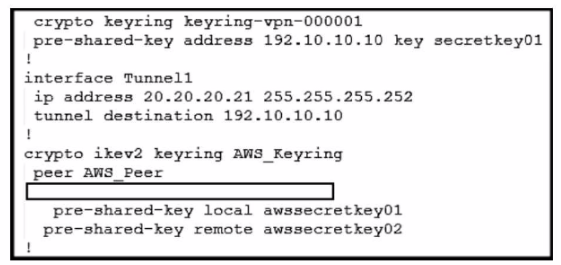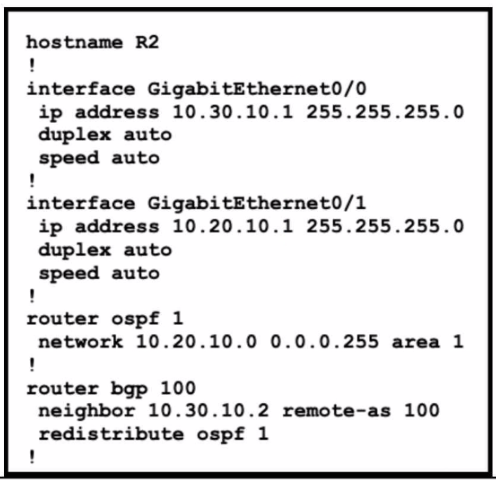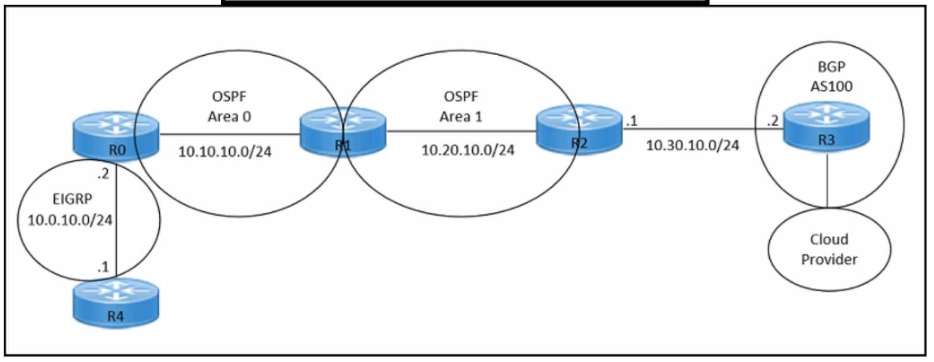Curious about Actual Cisco CCNP (300-440) Exam Questions?
Here are sample Cisco Designing and Implementing Cloud Connectivity (300-440) Exam questions from real exam. You can get more Cisco CCNP (300-440) Exam premium practice questions at TestInsights.
Which feature is unique to Cisco SD-WAN IPsec tunnels compared to native IPsec VPN tunnels?
Start a Discussions
Refer to the exhibits.

Refer to the exhibit. An engineer needs to configure a site-to-site IPsec VPN connection between an on-premises Cisco IOS XE router and Amazon Web Services (AWS). Which configuration command must be placed in the blank in the code to complete the tunnel configuration?
Correct : C
Configure IOS-XE Site-to-Site VPN Connection to Amazon Web Services - Cisco Community
[Security for VPNs with IPsec Configuration Guide, Cisco IOS XE Release 3S - Config
Start a Discussions
Refer to the exhibits.


Refer to the exhibits. An engineer must redistribute only the 10.0.10.0/24 network into BGP to connect an on-premises network to a public cloud provider. These routes are currently redistributed:

Which command is missing on router R2?
Correct : C
The commandredistribute ospf 1 match externalis missing on router R2. This command is needed to redistribute only the external OSPF routes into BGP. The external OSPF routes are those that are learned from another routing protocol or redistributed into OSPF. In this case, the 10.0.10.0/24 network is an external OSPF route, as it is redistributed from EIGRP into OSPF on router R1. The other commands are either already present or not relevant for this scenario.Reference:=
Start a Discussions
A company with multiple branch offices wants a suitable connectivity model to meet these network architecture requirements:
* high availability
* quality of service (QoS)
* multihoming
* specific routing needs
Which connectivity model meets these requirements?
Correct : D
A fully meshed topology with SD-WAN technology using dynamic routing and prioritized traffic for QoS meets the network architecture requirements of the company. A fully meshed topology provides high availability by eliminating single points of failure and allowing multiple paths between branch offices. SD-WAN technology enables multihoming by supporting multiple transport options, such as MPLS, internet, LTE, etc. SD-WAN also provides QoS by applying policies to prioritize traffic based on application, user, or network conditions. Dynamic routing allows the SD-WAN solution to adapt to changing network conditions and optimize the path selection for each traffic type. A fully meshed topology with SD-WAN technology can also support specific routing needs, such as segment routing, policy-based routing, or application-aware routing.Reference:
Designing and Implementing Cloud Connectivity (ENCC) v1.0
[Cisco SD-WAN Design Guide]
[Cisco SD-WAN Configuration Guide]
Start a Discussions
Total 38 questions